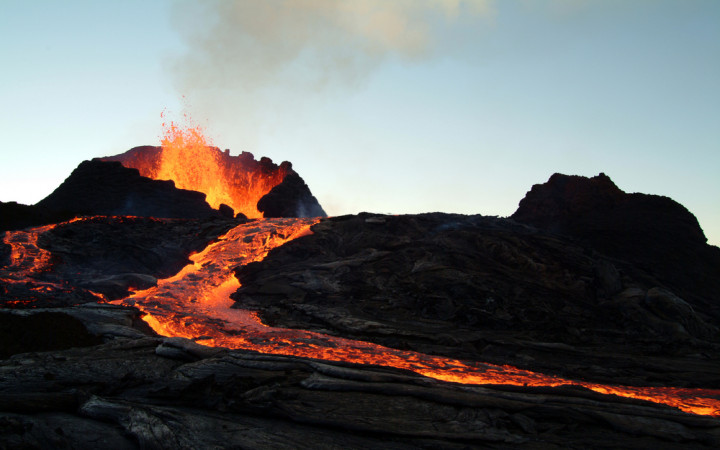Today’s Wonder of the Day was inspired by Jaye. Jaye Wonders, “How hot does lava get?” Thanks for WONDERing with us, Jaye!
Volcanoes are like huge valves that release pressure from deep inside Earth. When they erupt, they remind us of how powerful the forces are that continually reshape Earth.
Deep inside Earth (90 miles or more), temperatures get hot enough to melt rock. This molten rock is called magma. When it liquefies, it begins to float toward the surface of Earth.
If it breaks through Earth's surface, it is then called lava. Although lava can be spewed into the air through a volcanic eruption, it's more common for lava to flow from a volcano through cracks called fissures.
Lava is made up of mostly silicon and oxygen. As lava escapes and travels before cooling, it often mixes with other elements, such as iron, magnesium, potassium, and calcium.
When lava first breaks through Earth's surface, it is an extremely hot liquid. On average, fresh lava can be between 1,300° F and 2,200° F (700° and 1,200° C)! Depending on its exact temperature, fresh lava usually glows either orange/red (cooler) or white (hotter).
Eventually, lava cools and returns to solid rock again. However, some forms of lava can flow great distances before cooling enough to solidify. The word lava comes from the Italian word for “stream."
Although popular movies may make you worry about the deadly power of lava flows, they usually move slowly enough to give people plenty of time to get out of the way. It's rare for anyone to die as a direct result of a lava flow, but it can be extremely damaging to land and property in its path.
Active lava flows at volcanoes might move several feet per minute when hot. As the lava flows cool, they slow down to a rate of only a few feet per day.
Geologists in Hawaii keep a close watch on active lava flows. They use handheld global positioning system (GPS) receivers to map lava flows as accurately as possible.
The GPS receivers use radio waves from satellites orbiting Earth to pinpoint locations within 15 feet. In this way, geologists can monitor lava flows that may be advancing toward areas where people live.




